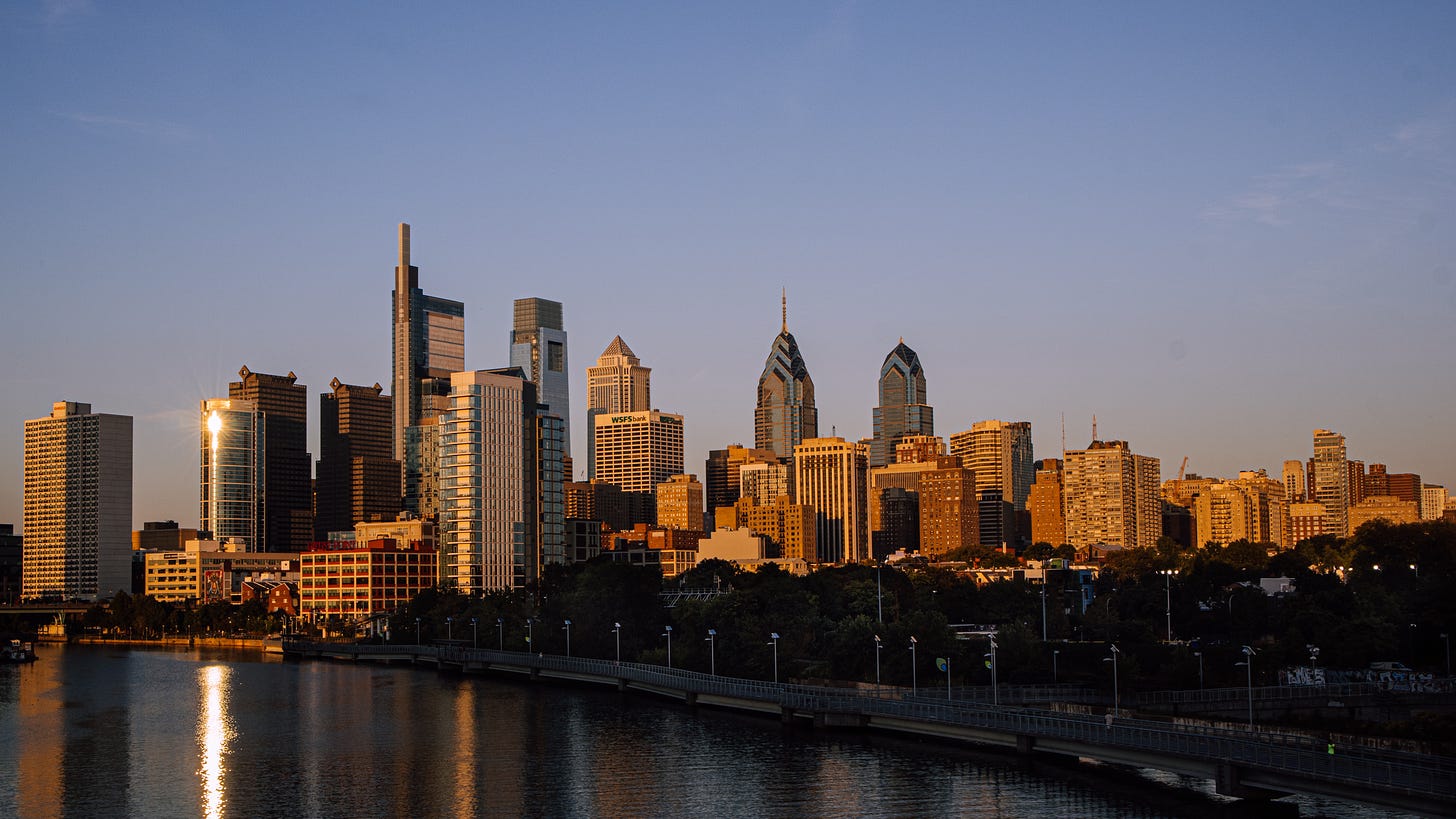
Author’s Note: “Resilience in Action” is a periodic series on how I handle adversity in everyday situations. This is the first post in the series.
Last week, I had the exciting opportunity to attend a Muscular Dystrophy Association (MDA) fundraiser organized by Rhys Hoskins of the Philadelphia Phillies and his wife, Jayme. “Go Yard with Rhys Hoskins” was an action-packed event that raised nearly $400,000 for MDA. As an MDA employee and member of the neuromuscular disease community, I was—and still am—blown away by the overwhelming generosity and support of those who attended. Many Phillies players past and present were there, which was a thrill for a baseball-obsessed fan like me.
And to think I almost didn’t go!
Up until three weeks ago, I believed that a trip to Philadelphia wasn’t in the cards for me. Any sort of extended travel these days is a test of my pain tolerance, and lately, I haven’t been feeling all that great. I love the idea of going on a road trip and exploring new locations, but the logistics of such a trip lays bare the difficulties I now experience.
Travel didn’t always use to be so difficult. Four years ago, my parents and I traveled to several conferences around the country. At each conference, I either spoke on a panel or met with work clients. It was great. We traveled to Boston, Orlando, Philadelphia, Boston again, Chicago, and Washington, DC. Although my body was tired at the end of each trip, it was a good kind of tired. But in the four years since, I have weakened considerably and don’t have nearly as much energy as I used to have.
I am writing this two days after the trip. I am still tired and sore. In fact, I might even have broken a rib. (I’ll explain how that happened in a minute.) But despite the fatigue and pain, there is no question in my mind: it was 100% worth the effort.
What I thought I’d do today is recap the journey and explain how I used many of the resilience strategies that I’ve discussed here on Hello, Adversity to both plan for and execute the trip. Think of this as a resilience case study.
To borrow Sy Sperling’s tagline for The Hair Club for Men, “I’m not only the [creator of Hello, Adversity], I’m also a client.”
The decision
Rhys and Jayme Hoskins have been involved with MDA since they volunteered as MDA Summer Camp counselors back in high school. Now that they are well-known in the Philadelphia community, Rhys and Jayme want to use their platform to support MDA in any way possible.
The first “Go Yard with Rhys Hoskins” event took place last year at Yards Brewing Company in Philadelphia, also the venue for this year’s fundraiser. Whereas last year’s event had around 150 attendees, this year the event was a sellout, with more than 350 tickets sold.
I remember looking at the pictures from last year and wishing I could have attended. It looked like a blast. When I found out the date for this year’s event, my mind went into action. How could I make this a reality?
I thought through the logistics, then came to the sobering conclusion that the trip might take too much out of me. I thought of the uncomfortable hotel beds, the long hours in the van, the obsessing over what to pack, and the emergency contingencies. Yes, it could work. But would it be worth the effort? Would it be worth feeling achy and exhausted on the car ride home?
Travel is miserable now; there’s no way around it. Flying isn’t really an option due to the inaccessibility of air travel. I like my wheelchair; I don’t want to see it destroyed by baggage handlers. The train, although an option, also isn’t ideal since I need to carry a lot of bulky accessories with me. The only realistic option is driving, which then involves my parents since I can’t drive anymore. On trips, my dad is both my chauffeur and caregiver. My mom doesn’t drive the van but provides caregiving support. Although I am thankful that we can still take road trips, they aren’t easy anymore. Easy left a long time ago.
I try not to focus on the negatives all the time, but sometimes it’s hard. This was no exception. In the beginning, I focused on all the reasons why I shouldn’t go, and not on why I should. After a while, I attempted to correct my negative thinking by looking at all the benefits of going, which included having a fun night out, meeting Rhys and Jayme and other members of the Phillies organization, and meeting coworkers whom I’d never met in person.
As with anything these days, it was a mental tug-of-war between the catastrophizing side of my brain and the optimistic side. The pros and cons ended in a stalemate. But the clock was ticking; I had to make a choice.
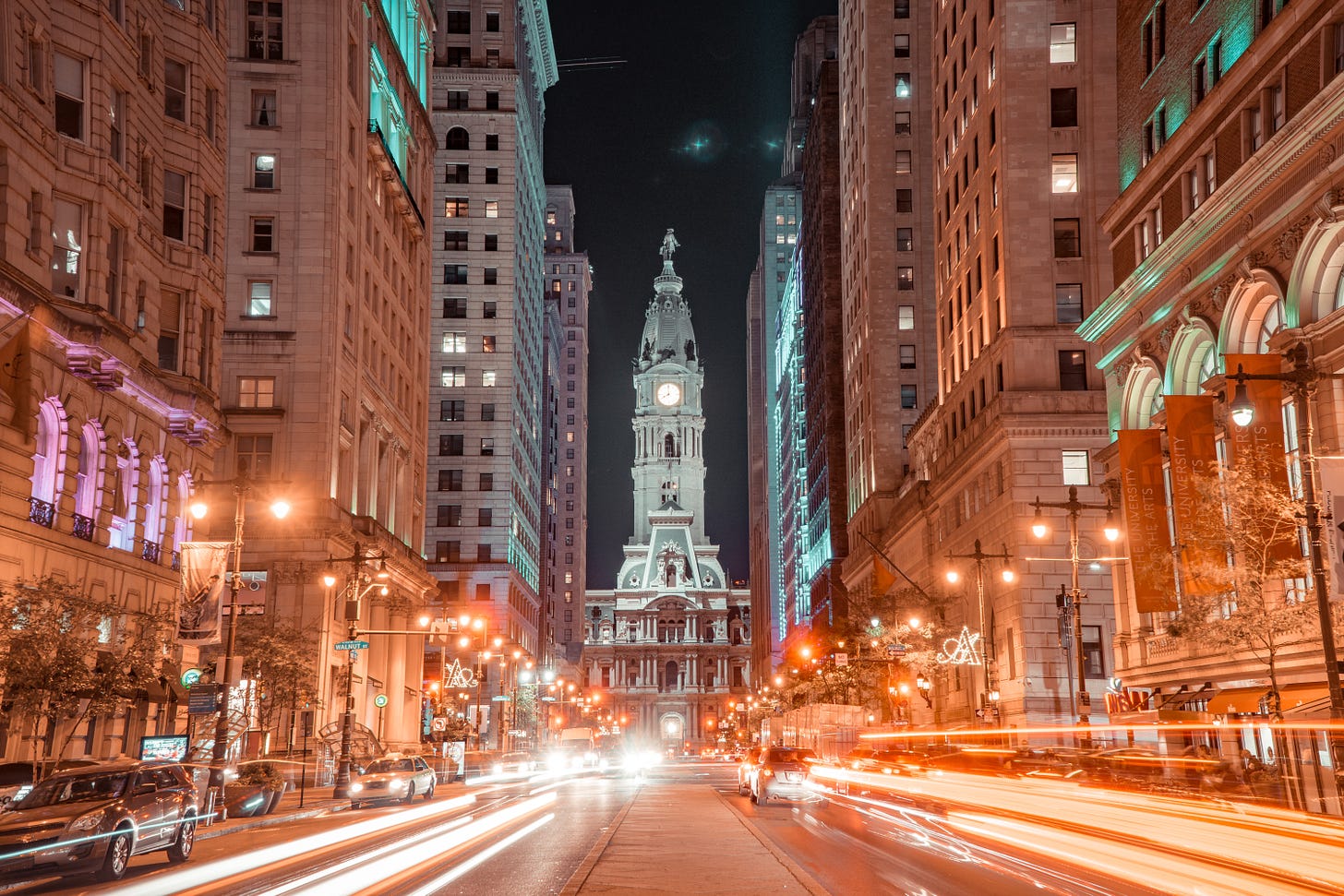
Go or no-go?
For many weeks I was in a holding pattern. Deep down I was pessimistic, but I wanted to hold out hope that I could go just in case.
As the go/no-go deadline date approached (the latest day I could book a hotel and RSVP), I talked with my parents and discussed what it would take to go. After several rounds of brainstorming and back and forth, we decided to give it a shot.
Great! But the decision was the easy part; now the real work began.
In order to make this trip a reality, we’d have to plan everything to a T. Philadelphia is approximately a 4-5 hour drive from my home in Connecticut. Not the longest trip we’ve been on, but not short either. I would need to make sure that I was comfortable for the duration of the trip, as I am prone to muscle pain and tension headaches. I would need to bring a neck pillow and several smaller pillows to prop up my arms.
In addition to comfort, there were other considerations:
Medications
Food and drink to bring on the car ride
How to lift and transfer me in the hotel room (my Hoyer Lift wouldn’t fit in the van)
The route down and back (As an added wrinkle, part of I-95 in Philadelphia collapsed the day after I booked my hotel room, so we needed to find a route that wouldn’t lead to insanity or road rage)
Other in-room logistics (I’ll leave it at that)
An understanding of where the rest stops are along the route
Emergency plans (emergency numbers, what to do if my wheelchair stops working, van companies to call if the car breaks down, etc.)
How to get to and from the event (thankfully, Philadelphia has Uber WAV)
I wish it were as simple as booking a room, hopping in a car, and giving it no extra thought. But unfortunately, it’s not that simple. No detail can be overlooked. In many ways, traveling is now something to endure, rather than enjoy.
But as the saying goes, if you have a why, you can bear almost any how. My why was the event.
Yet another wrinkle
A week before the event, I started to notice concerning symptoms. I have been dealing with a swallowing issue since January, which has mostly been resolved but is still a nuisance to deal with. It has forced me to do a lot of extra chewing, which has tired out my jaw muscles. The Thursday before we left, I woke up and my facial muscles felt extra weak. It would get better over the course of the day but left me wondering what was happening.
Later in the day, I began to notice that I felt winded after talking for a long period of time. My mind began to panic.
Jaw weakness. Facial weakness. Fatigue from talking. What is going on? Are these temporary symptoms, or are they permanent? Are my issues real or psychosomatic? Is it just fatigue or something far worse?
I am a terrible hypochondriac and have worried myself into a frenzy before. But until I had an answer, my mind jumped to the worst possible outcomes. Diseases I don’t even want to discuss. It reminds me of a recent post by Sue Deagle about how our minds tend to go haywire in predicting the future. We take in certain data points (in this case, fatigue and weakness) and believe that the future will play out exactly as we expect (imminent death).
The symptoms continued through the weekend. Several times in the days leading up to the event, I thought about backing out.
But deep down, I knew I had to go, if for no other reason than to prove to myself that I can still do hard things, even with these new symptoms. As difficult as this trip would be for me physically, it represented living life to the fullest, something I am not the best at doing. If I could pull it off, it would give me a tremendous boost of confidence.
I was not backing out.
No pain, no gain
With I-95 in Philadelphia temporarily out of commission, we needed to plan out a different route, one that would take us through New Jersey. Easy enough, except for one constraint: we had to avoid New York City and the George Washington Bridge.
My dad hates driving in New York. Always has. When I told him I was taking an internship in New York in 2015, he looked like he was about to strangle me. His disdain for the George Washington Bridge stems from the Great Traffic Jam of 2001 when we were stranded on the bridge for several hours. We managed to hear the entire Red Sox-Yankees game on the radio while on the bridge. (The Red Sox lost on a walk-off homer, which made it even more miserable.) Even today, any mention of the George Washington Bridge sends my dad into a rage.
Since you probably didn’t subscribe to this site to read about traffic routes to Philadelphia, I’ll save you the boring details and just say it took around five hours. I was fine for most of the ride, but by the time we arrived at the hotel, I had a terrible tension headache. The back and forth, stop and go of traffic tightened my neck muscles. My neck pillow wasn’t much help. It took most of the afternoon for the headache to go away.
The hotel—the Hilton at Penn’s Landing overlooking the Delaware River—was a nice enough hotel. No real complaints. But the bed was not comfortable. I am used to sleeping in an adjustable bed and am not used to lying flat. As a result, I barely got any sleep.
Worse, when getting into bed the first night, as my dad lifted me, I felt a sharp pain in my left rib. Ouch! The pain subsided as soon as he put me down, but every time he lifted me the rest of the trip (which was four or five more times), I felt that shooting pain.
Is it a cracked rib? Okay, probably not. I was being dramatic. But it was miserable when it happened.
A fun night
Fortunately, we arrived the night before and I had time to recuperate. By the day of the event, I was good to go.
Yards is a cool venue. It has a brewery on-premises and a two-floor event space and bar. Whereas the event last year was just on the top floor, this time we had the entire place.
I got there an hour before, met up with some of my MDA coworkers, and got familiar with the event space while it was still quiet. I then got to meet Rhys and Jayme, which was a huge thrill. They were just as awesome as I expected.
Attendees—including the Phillies players—began to file in around 6:30. The Phillies played that afternoon and lost to the Atlanta Braves. I give them credit for showing up after a tough game.
By the time the event got going, the bar was packed. I was a little anxious at first, simply because I had not been to a large social gathering in several years. My social anxiety was off the charts. I also wasn’t sure if I’d be able to carry on any long conversations that required raising my voice over the noise and music. But after some food and drinks, I was able to calm down and do some socializing. I spent 15 minutes talking to Phillies radio guy and former player Kevin Stocker, who told some interesting stories about hitting at Fenway Park.
(I also may or may not have ambushed Kyle Schwarber—one of my favorite players—in the beer line. I am happy to report he is very nice.)
After an hour of socializing, there was a brief run of show. Rhys introduced MDA and his connection to the organization, before introducing several MDA families who spoke about their experience with neuromuscular disease. One of the families had lost their son, Christian, two weeks prior. They had planned to go to the event together, and his parents attended in his memory. It was an emotional moment, one that reinforced why we must continue to raise money for research.
After the run of show was the live auction, which turned into several amusing bidding wars between players and attendees. The event raised nearly $400,000 for MDA, an astounding number.
By the end of the night, I was exhausted, but at least this time, it was a satisfying exhaustion. The sweet price of accomplishment.
Resilience in action
The reason the trip was a success was because of the preparation involved beforehand. (If you’re wondering why I skipped over the drive back, please don’t ask.) Making it work involved employing several different resilience strategies I’ve discussed on this site, including:
Consulting my 100-year-old self: Okay, so I don’t have full-on conversations with my future self, but I do like to think about what an older, wiser version of me would think of a decision like this. I believe my future self would have agreed that it was a worthwhile trip despite the effort involved. I know that if I didn’t go, I would have seen pictures and videos from the event and felt regret. I can also picture my future self gently reminding me that, as I get older, nothing in life is guaranteed. There will never be an ideal time to do something. There will always be reasons to say no.
Living in the present moment - I constantly worry about the future. There is so much uncertainty, and I often wonder if I will be ready for the challenges to come. I have to constantly remind myself to live in the present. In this situation, I obsessed over logistics and all that could happen, both good, bad, and catastrophic. Throughout the trip, I reminded myself to live in the moment and worry about my present circumstances only. It made a major difference.
Finding role models - For a few days, I was in a tough place mentally as I worried about my symptoms. What if my disease is progressing much faster than I expected? This is not a pleasant thought. Even though I’m pretty sure the symptoms were temporary (although my disease is getting worse overall), I still found it helpful to find examples of others who had similar illnesses, who continued to stay active and travel. It was a helpful corrective to my all-or-nothing thoughts.
Controlling what I can control - This is one of the hardest strategies to implement. It makes sense on paper, but to do it is another story entirely. So much of what I fear is out of my control. I had to remind myself, I can’t control the outcome of the trip. I can’t control the traffic. I can’t control if there will be an emergency. I can’t control my underlying disease. Once I did that, I could see that there was still so much I could do. I could prepare contingency plans and alternate routes. Regarding my disease, I could take concrete steps to improve my quality of life, such as getting better sleep, eating better, and researching the best equipment to use as my condition worsens. When I keep myself busy, I am in a much better headspace.
The weekly brainstorm - For several weeks leading up to the trip, I spent most of my weekly brainstorming sessions thinking through the logistics, considering the different tasks and contingencies, and what I needed to do to have a safe, fun trip. This groundwork proved instrumental.
Occam’s razor - I haven’t written about this yet, but this mental model was useful as I tried to keep my disease worries in check. Occam’s Razor states that the simplest explanation is usually the right one. Not always, but most of the time. Adding more variables to an explanation makes it less likely. When I was thinking about my symptoms, I kept going to the worst possible outcome. I had to remind myself that there were simpler explanations. For example, the fatigue could be due to the wildfire smoke from the previous week that affected my lungs. The jaw weakness could be from all the extra chewing I’ve had to do over the last few months and the fact that I haven’t slept well in forever. Those were more likely explanations than a spontaneous, catastrophic illness. Using Occam’s Razor helped restore my sanity.
Pain is temporary. Memories last a lifetime.
The whole trip was a lot. For the average person, this might not seem like a big deal, but for me, a trip like this is my Super Bowl. My main event. It took a lot of coordination and planning and there were moments that I wondered whether the pain and stress were worth it, but it was. I got to spend quality time with my parents. I met my coworkers in person for the first time. I met my friend’s parents who attended. I got to meet Rhys and Jayme and Kyle Schwarber. I socialized. I was out and about. I had a ton of fun. That’s what life is all about.
I have made peace with the fact that my life is going to be one of constant change and adaptation. I hope that by sharing stories like this, you will better understand why I started Hello, Adversity, and how I live with life’s ups and downs every day. I struggle with the same things you do. I haven’t mastered adversity, and probably never will.
But as I’ve come to learn, life is meaningful because of the struggle, not in spite of it.



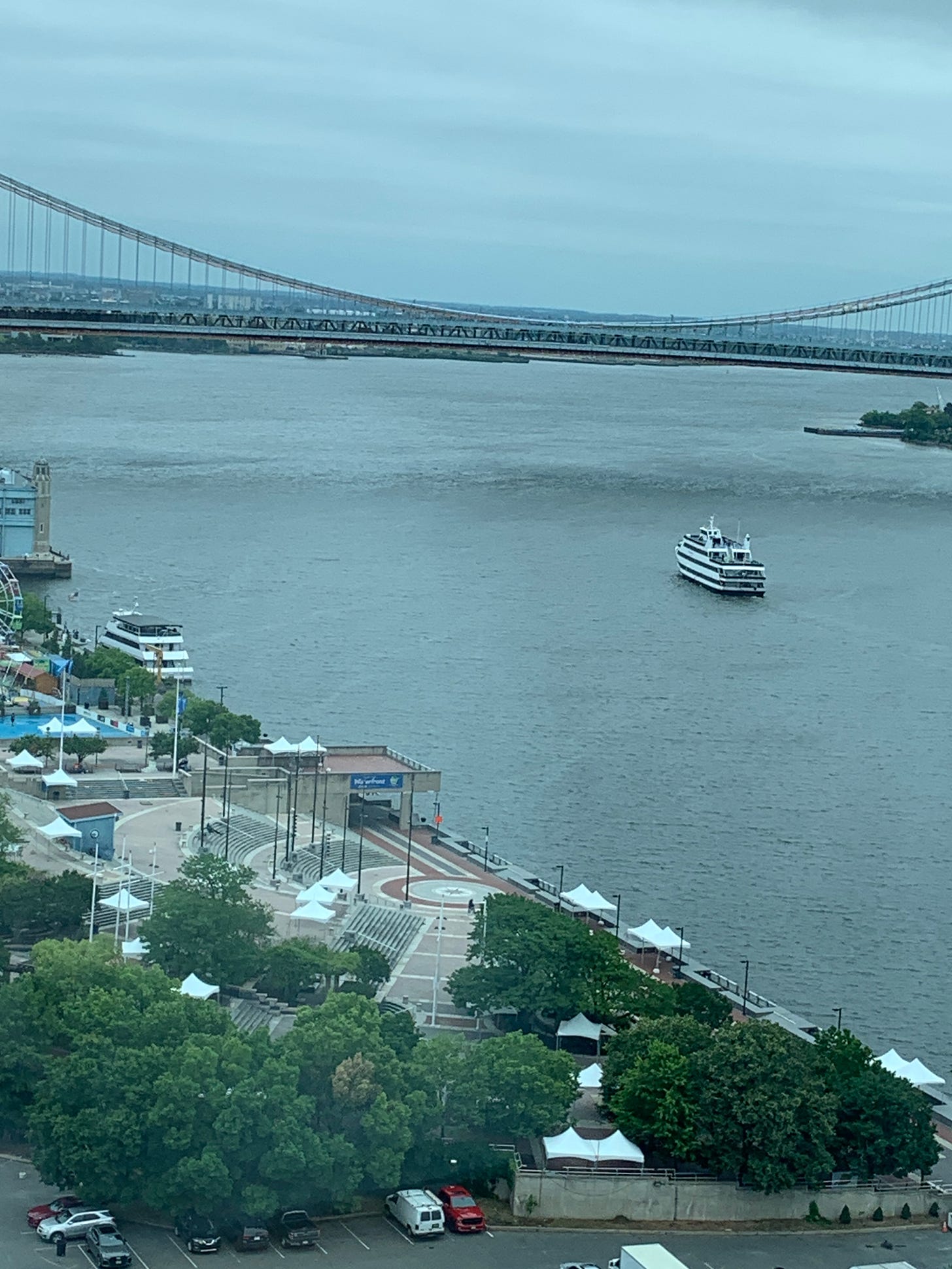
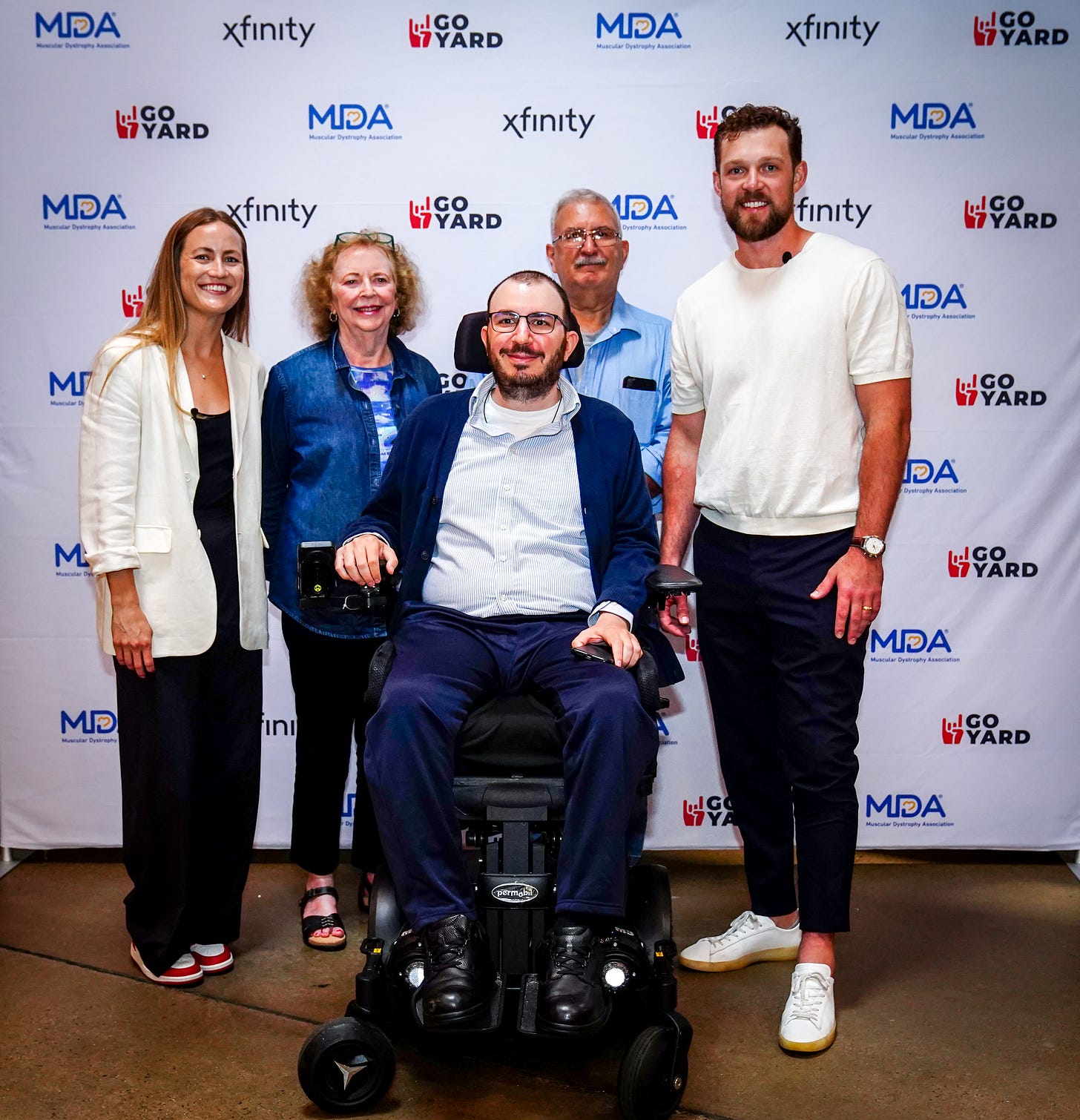
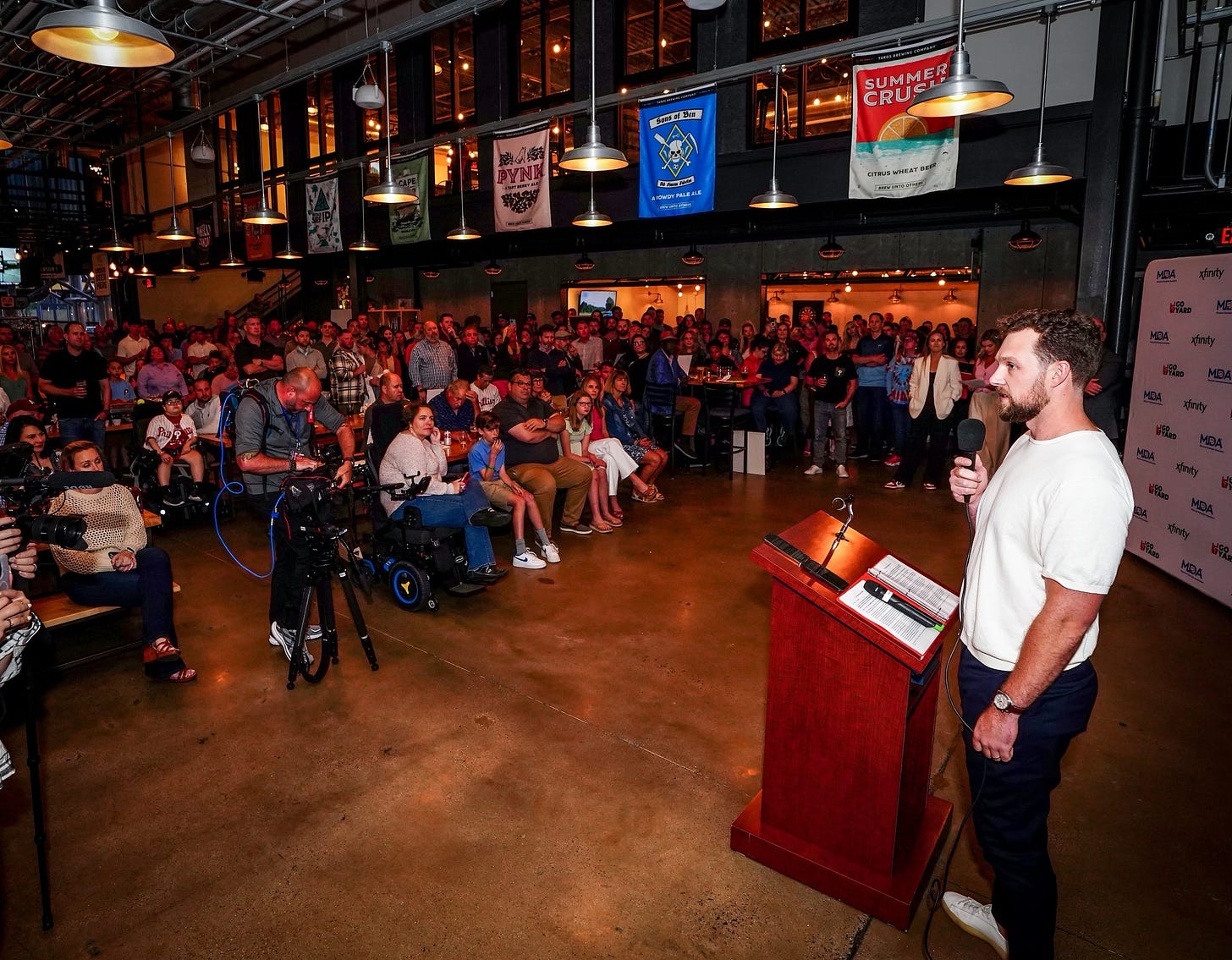
Amazing post. At risk of sounding like a teenager: RESPECT, man! 🙌 So glad you went.
'Resilience in Action' is such a great idea for a series. I thoroughly enjoy your writing, Chris.
Echoing everyone else here: I'm so happy that you were able to attend this event; it was clearly meaningful on many different levels. But I'm also really appreciative that you shared the specific details of what it took to show up: the challenges involved, and the strategies you and your parents used to address them. I know I'm going to learn a lot from this "Resilience in Action" series, so thank you for writing it!